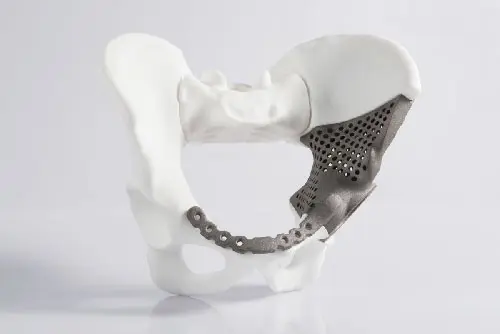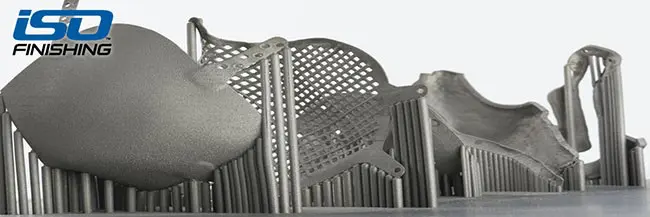Additive manufacturing (a.k.a 3D printing) continues to take the manufacturing industry by storm. No matter how technologically advanced they become, no 3D printer, no matter what size, style or resolution, can produce objects with the same level of surface quality as traditional manufacturing methods. No matter how well designed an object is or how advanced the printer is (at present), the basic nature of 3D printing will not allow for the same uniform surface that injection molding provides. Fortunately, ISO Finishing can help with the necessary surface improvement steps through post-processing finishing that provides the desired look and feel to meet the required specifications.
Support Removal
The first step in finishing an object, for just about any printing technology, is to remove the supportive material. This material is there to provide support for the three-dimensional part. The more support that is added, the more complex a design can be. The amount of support used can be optimized to lower cost and print time.The material includes a base resin that is s keep the object from succumbing to gravity or, in the case of powdered-metal-based printing, keeps the object anchored to the print bed so it doesn’t curl up on itself. The supportive material will generally have a detrimental impact on the appearance of a part. Most often times some type of surface finishing is generally required.The method and ease of removing these supports varies by printing method and build material. Once the supportive material is removed, numerous options open up for what further steps an engineer can take to finalize the piece.

The most likely finishing step to follow support removal would be a form of sanding. We accomplish this in a few different ways using our centrifugal barrel machines or our vibratory finishing machines, but the goal is to remove any traces of support structures and reduce or eliminate the “stair step” surface texture found on every additive produced object. Removing these steps is important, not only for enhancing the work piece’s appearance, but its function and durability as well. Let’s say you used 3D printing to create a mold that would be used to make an object with a flow requirement. The stair steps could cause unwanted turbulence. In 3D printed metal parts, stair steps can be a stress riser in the object and could lead to the part’s failure.Sanding by hand is an option, but is often time consuming and expensive in terms of labor and does not work well for pieces with fine surface details or surfaces in hard-to-reach places.
Mass Finishing
Originally developed for metal work, but adapted for use with other materials used in additive manufacturing, mass finishing acts as both a sander and polisher for large quantities of parts simultaneously. The process works by jostling or tumbling parts around in a tub or barrel of sanding/polishing media. As the media comes in contact with the part, impact forces and friction work to sand and polish away imperfections on the parts surface. The media can be ceramic, synthetic, plastic or corncob and each is suited to a different material. Each of these media come in a variety of shapes to accommodate different part geometries.
Industry Tips
With so many different finishing methods available, some may find it daunting to figure out which method is suitable for their part and their needs, but that is when our experience at ISO Finishing comes in handy. We will ask the right questions to figure out the purpose of the part. If your part is intended for marketing purposes, more aesthetic finishing may be appropriate, but if the part is intended to demonstrate a form and fit application, it may be better to skip the aesthetics and focus on ensuring that the part is dimensionally accurate. We also take production into consideration when developing and recommending the finishing process. We offer Free Sample Processing for to provide a few prototypes of different processes and options. Finishing is an art. When you work with your team of experts we truly do everything we can to understand what type of finishing you need and to meet your expectations up front.


